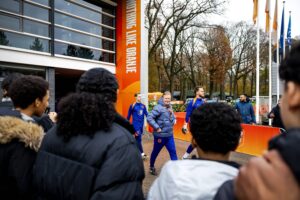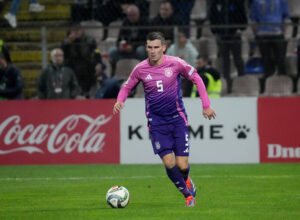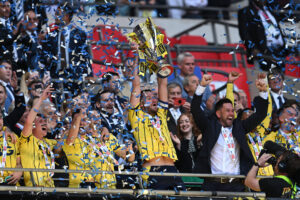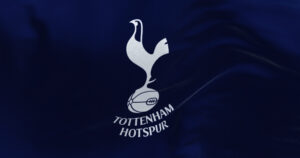Welcome to the new series of articles from the Last Word on Football. This series looks at the grounds that are sadly no longer with us. Grounds that are famous not only in their particular country but also around the world. Grounds that will always hold a special place in the hearts of a particular team’s supporters and fans of football alike. Many will love them, some may hate them; however, they could never be forgotten.
Today we look at Arsenal’s former ground, Highbury. Arsenal’s past extends to both sides of the river Thames. But, despite an early growth in south-east London, the Gunners moved to north London. Here, they established their home just north of central London for over 90 years.
Never to Be Forgotten Grounds: Highbury
Opening of Highbury
Arsenal started in 1886 as Dial Square. Reference to “Dial” paid tribute to a sundial on top of the Woolwich Arsenal Armament Factory, where the club formed.
Soon, the club renamed to become Royal Arsenal. They played early matches around Plumstead, south-east London. Early venues included Plumstead Common and the Sportsman Grounds on Plumstead Marshes.
Due to increasing popularity, the club rented the larger Manor Ground, Plumstead, before the 1889/90 season. They only spent a year here and moved to nearby Invicta Playing Fields for six-years, but soon returned to the Manor Ground due to increasing rents.
By the early 20th century, Arsenal owned the Manor Ground and they enjoyed a period of relative success and stability. But, by 1913 the club suffered financially and a drastic change needed to attract more fans and revenue. New chairman Henry Norris concluded that remaining in Plumstead would harm the club’s development.
By 1913, Norris scouted suitable locations around London. Battersea, south-west London and Haringey, north London, did not meet Norris’ requirements. Eventually, Norris brought a plot of land in Highbury, north London. Closeness to a tube station was essential in the decision and meant higher gate receipts.
Nearby neighbours, Tottenham Hotspur, became outraged by the move as Arsenal settled on Spurs’ well-established territory. However, the move finalised and Arsenal played their final match at the Manor Ground in April 1913, drawing 1-1 draw with Middlesbrough. The move to north London changed the identity of the football club forever.
By September 1913 Highbury required major building work. Turnstiles and terraces were hurriedly built during the summer of 1913. A grandstand stood at one end of the pitch, which held 9,000 people. An east stand also provided further seating. Despite this, Arsenal played their first match at the ground, beating Leicester Fosse 2-1.
Early Days
Arsenal enjoyed a fine start to their first season at their new home in north London. The newly named, just Arsenal, began the season well and looked favourites for promotion back to the First Division. But the season came to an abrupt halt when the First World War broke out in 1914.
Bizarrely, Arsenal returned to post-war football as a top-flight team, even though they never formally won promotion. Again, to the grievance of Spurs, Norris negotiated Arsenal’s promotion and they swapped leagues with Tottenham. A deepening hatred between the two teams in north London began to flourish.
The Arsenal ground began to draw the revenue Norris sought with the move. England lost 2-1 to Wales in the first international match at the ground in 1920. Many more internationals would take place throughout the 20th century, including Olympic fixtures in the 1948 Olympics.
Developments also took place after Norris brought the ground outright in 1925. Arsenal’s purchase led to major developments of the two existing stands at Highbury. The west stand was erected in 1932. It was an impressive structure and the two-tiered stand expanded capacity in this part of the ground to 4,000 seated and 17,000 standing. Developments to the east stand also took place in 1936. The club added player facilities and offices as well as the famous Marble Halls.
As a now well-established club in Highbury, Arsenal began to draw large crowds. In 1935, Highbury reached a record attendance as 73,295 spectators came to watch the Gunners take on Sunderland. The game finished 0-0.
No major additions took place to Highbury for decades and it remained similar until the Clock End was expanded into a two-tier stand in 1993.
Classic Games
Arsenal 3-0 Anderlecht (1970)
The Gunners trailed Belgian side Anderlecht 3-1 going into the second leg of the Fairs Cup at Highbury. Anderlecht out-played Arsenal with their neat, slick passing style. Only a late header from 18-year-old Ray Kennedy gave Arsenal a slight glimmer of hope.
It seemed as though Arsenal’s long 17-year trophy drought would continue with the Brussels side in a strong position before the match in north London. However, 52,000 fans entered a drenched Highbury on April 28 1970, hopeful that the Gunners would surge from behind to lift the Fairs Cup. Many thousands more believed to be outside the gates with Highbury full to the brim.
Arsenal began brightly and took the lead after 25 minutes. Eddie Kelley’s thumping effort lifted the Highbury crowd immediately. Expectant, the crowd, according to some as the loudest Highbury ever witnessed, roared the team on to a second on 75 minutes. John Radford leapt highest to meet a Bob McNab cross.
A turbulent 120 seconds followed. Anderlecht forward Jan Mulder’s shot cannoned off the post just seconds after Radford’s goal. But, the tie was sealed for Arsenal 90 seconds later. Charlie George weighted a perfect through ball to Jon Sammels who beautifully finished into the Anderlecht net.
Arsenal lifted the trophy and, inspired by their win, went on to win the Football league Championship trophy and the FA Cup the following season.
Arsenal 4-0 Everton (1998)
Arsenal faced Everton at Highbury on May 3, 1998, knowing just one win in their final three games would secure their first Premier League title under Arsene Wenger.
The Everton fixture presented the biggest opportunity for Wenger’s side to lift the trophy. Everton found themselves in a relegation battle, while the Gunners faced to tricky away trips to Aston Villa and Liverpool.
Highbury’s pre-match nerves could be felt by all. But an early own goal from Everton’s Slaven Bilic after six minutes sparked the crowd into a frenzy. 20 minutes later, Dutch winger Marc Overmars doubled the lead. His tame shot somehow slipped under Toffee’s keeper Thomas Myhre and Arsenal got better and better.
Overmars added his second of the game shortly after half-time. The Dutchman in trademark style, sprinted half the pitch, left three defenders behind him and slotted past Myhre for the Gunner’s third. Highbury was in full swing, but the Gunners captain saved the greatest moment till last.
With victory assured, Arsenal comfortably controlled the game. But this wasn’t enough for Tony Adams. In the closing moments, he left his position in defence and made a gut-busting run behind Everton’s defence. Steve Bould played a perfectly weighted pass to his marauding centre-back partner. Adams controlled well into the penalty area and smashed an unstoppable shot past Myhre to secure the Premier League title.
Arsenal 4-2 Wigan (2006)
Arsenal’s final game at Highbury was anything but tame. A familiar hero salvaged the leaving part for Arsenal on the final day of the 2005/06 season.
The Gunners needed a win against Wigan to secure the final Champions League place and hoped rivals Spurs would lose at West Ham.
In a routine start, Robert Pires put Arsenal ahead after eight minutes, tapping in from close range in front of a red and white display.
However, Wigan’s Paul Scharner struck two minutes later and David Thompson added the Latics second on 33 minutes. Tensions grew when the news that Spurs made it 1-1 at the Boleyn Ground filtered through the terraces.
In another twist, club legend Thierry Henry scored before half-time. He beat the offside trap and coolly slotted into the net. As it stood at half time, Arsenal would finish outside the top-four.
Henry the saviour ceased on some slack Wigan defending to add his second of the afternoon. Almost parallel in time at West Ham, news arrived that Teddy Sheringham missed a penalty to put Spurs ahead.
Henry completed his hat-trick with 15 minutes left from the penalty spot. It was enough to wrap up Arsenal’s win. But the Gunners now relied on West Ham to grab the winner against Spurs.
Five minutes later, Yossi Bennayon struck at Upton Park and the Highbury crowd burst into life again. Both Arsenal and the Hammers held on and the final whistle led to emotional farewells at Highbury.
A fitting end to life at Highbury. Winning, a Henry hat-trick, a top-four finish and getting one over Spurs.
Closure of Highbury
Preparations for a move away from Highbury began in 1999 and a move to nearby Ashburton Grove was approved. Construction of the Emirates began in 2002 and was complete by 2006.
In Arsenal’s 2005/06 season, the club commemorated their long-term history at Highbury. The club shirt temporarily reverted back to the original maroon colour of the 1913/14 season. An art deco crest, first introduced by Arsenal in the 1930s, was designed for the shirts.
After the dramatic final game against Wigan, Highbury hosted a Football Aid charity match, the final match at the ground. The club closed the stadium permanently before it was converted to a housing complex known as “Highbury Square”.
Parts of Highbury auctioned off to fans prior to the sites demolishment. Fans purchased chunks of the ground, parts of George Graham’s old desk and the old goalposts. The famous clock, however, made the short journey up the Holloway Road. It proudly ticks high over the Emirates pitch. A reminder of the club’s illustrious former ground.
The Emirates provides everything a modern stadium should. It’s representative of Arsenal’s long-standing time at the top of English football. Henry Norris would be proud of what the humble Plumstead based club became.
Although, the successes from Highburys have not been recreated at the Emirates yet. But this might be the case 93 years later.
Main Photo






